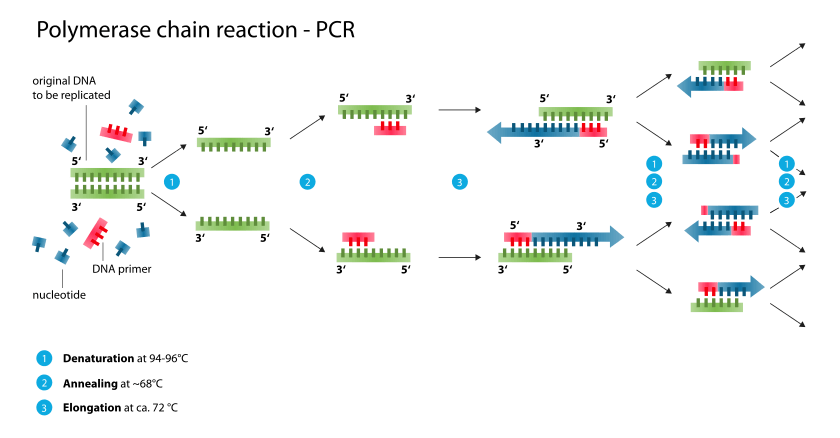PCR: The Polymerase Chain Reaction
6/3/2014
JoVE Science Education Database. Basic Methods in Cellular and Molecular Biology. PCR: The Polymerase Chain Reaction. Journal of Visualized Experiments, Cambridge, MA, doi: 10.3791/5056 (2014).
The polymerase chain reaction, or PCR, is a technique used to amplify DNA through thermocycling – cyles of temperature changes at fixed time intervals. Using a thermostable DNA polymerase, PCR can create numerous copies of DNA from DNA building blocks called dinucleoside triphosphates or dNTPs. There are three steps in PCR: denaturation, annealing, and elongation. Denaturation is the first step in the cycle and causes the DNA to melt by disrupting hydrogen bonds between the bases resulting in single-stranded DNA. Annealing lowers the temperature enough to allow the binding of oligonucleotide primers to the DNA template. During the elongation step DNA polymerase will synthesize new double-stranded DNA.
This video provides an introduction to the PCR procedure. The basic principles of PCR are described as well as a step-by-step procedure for setting up a generalized PCR reaction. The video shows the necessary components for a PCR reaction, includes instruction for primer design, and provides helpful hints for ensuring successful PCR reactions.






